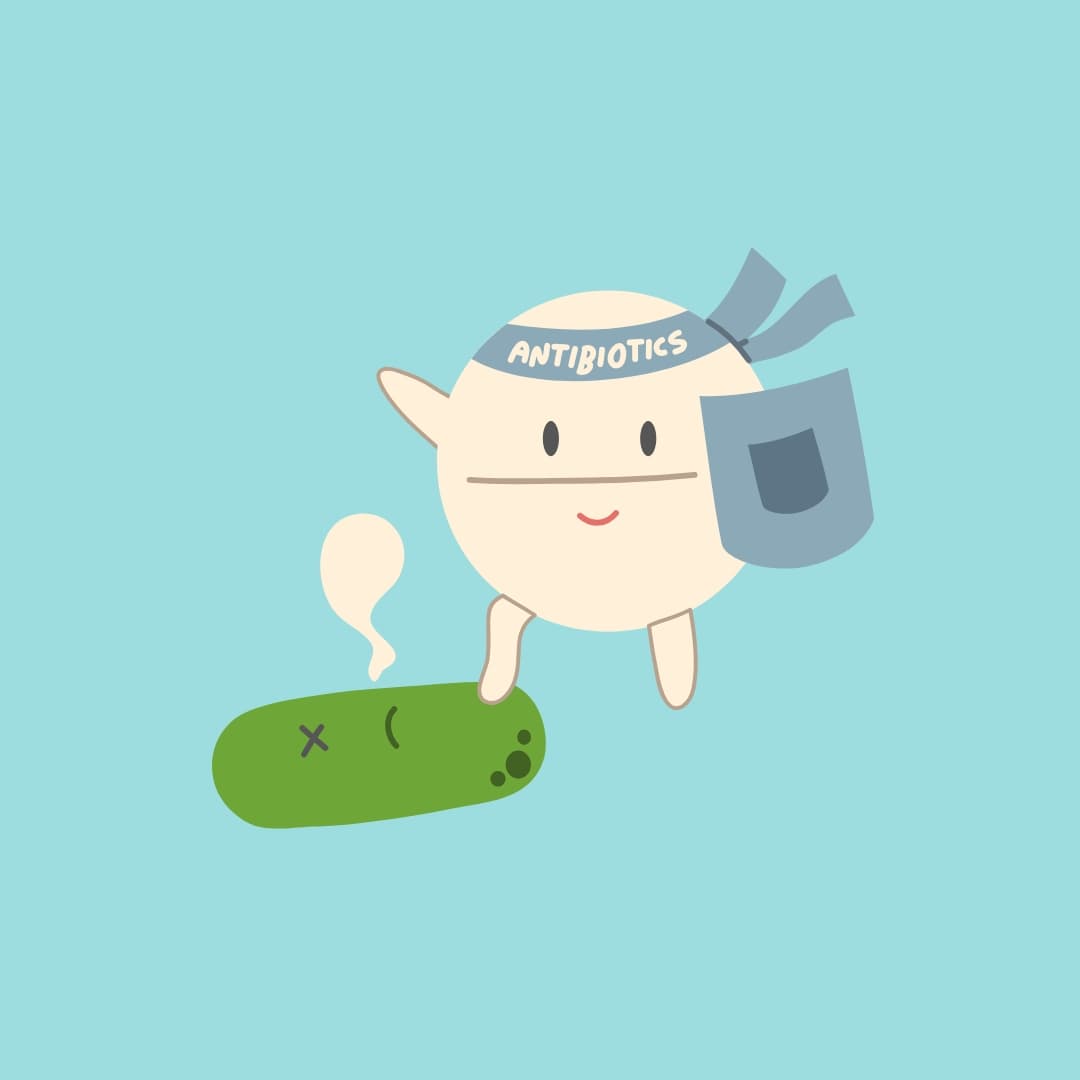Antibiotics used to be the solution, now they might be the problem
Antibiotics are chemical substances produced by microorganisms that inhibit or destroy bacteria and other harmful microbes. Their use in medicine dates Antibiotics are chemical substances produced by microorganisms that inhibit or destroy bacteria and other harmful microbes. Their use in medicine dates back to the discovery of penicillin by Sir Alexander Fleming in 1929. Since then, antibiotics have played a key role in both human and veterinary medicine, including aquaculture.
In aquaculture, antibiotics are widely used to control bacterial infections. As fish and shrimp farming intensifies to meet global demand, high stocking densities and declining water quality have increased the risk of disease outbreaks. Bacterial infections remain one of the most significant challenges in modern aquaculture. Today, it is estimated that around 72% of fish and shrimp farms use at least one antibiotic, either for treatment or, in some cases, for growth promotion.
The first recorded use of antibiotics in aquaculture was in 1946, when sulfonamides were used to treat brook trout infected with Aeromonas salmonicida. Over time, antibiotics have evolved in response to bacterial resistance, with synthetic and semi-synthetic forms becoming more common. However, the widespread use of antibiotics has raised serious concerns regarding antimicrobial resistance (AMR) and drug residues in seafood.
To address these concerns, many countries now enforce strict regulations or outright bans on specific antibiotics in aquaculture. Both the United States and the European Union operate under a “zero tolerance” policy, meaning any detectable residue of banned substances results in shipment rejection. This includes antibiotics like chloramphenicol and nitrofurans.
Common Banned Antibiotics and Reasons for Prohibition
Chloramphenicol: Can cause aplastic anemia in humans
Nitrofurans: Known carcinogen
Metronidazole: Genotoxicity concerns
Fluoroquinolones: Contributes to antimicrobial resistance (AMR)
Sulfonamides: Residue concerns; banned for growth promotion
Colistin: Banned in food-producing animals
Antibiotic Mechanisms of Action
Bactericidal: Kills bacteria by disrupting cell walls or essential cell components (e.g., penicillin, fluoroquinolones).
Bacteriostatic: Inhibits bacterial growth by interfering with protein synthesis or DNA replication (e.g., tetracyclines, sulfonamides, chloramphenicol).
Residue Testing and International Standards
Residue testing is now mandatory in many countries before export. Techniques like ELISA are commonly used for screening, while LC-MS/MS is the gold standard for accurately quantifying residues in parts per billion (ppb). In the U.S., LC-MS/MS is the official method for testing imported seafood.
Country-Specific Regulations
Thailand
As of March 2025, the Thai Frozen Foods Association (TFFA) requires shrimp farmers and processors to avoid all unapproved antibiotics. If residues are found, processing plants will reject shrimp from the affected ponds. Farmers must collect two sets of 1 kg samples per pond — one sent to a central lab and one retained as backup. The lab uses LC-MS/MS to test for six specific residues:
India
India enforces strict monitoring through the Export Inspection Council (EIC) and the Marine Products Export Development Authority (MPEDA). As of May 1, 2025, the use of antibiotics for growth promotion is banned. MPEDA requires pre-harvest testing of shrimp for banned residues such as:
Indonesia
The Ministry of Marine Affairs and Fisheries (Regulation №19 of 2024) prohibits the use of several veterinary drugs and antibiotics in aquaculture, including:
Only the following antibiotics are permitted under specific conditions:
Exporters must conduct LC-MS/MS testing and obtain a health certificate verifying that their products meet the Maximum Residue Limits (MRLs) of importing countries.
Natural Alternatives to Antibiotics
With increasing restrictions on antibiotics, natural plant extracts with antimicrobial properties are gaining attention. These compounds pose minimal risk of residue accumulation and are environmentally friendly. Administered orally through feed, they not only control pathogens but also boost shrimp immune systems.
Blue Aqua has developed ViGuard*L, a plant-based alternative to antibiotics. This formulation contains essential oils that combat harmful Vibrio species, particularly Vibrio parahaemolyticus, while enhancing shrimp immunity and survival rates. ViGuard*L is safe, sustainable, and residue-free. For optimal results, a dosage of 3–5 mL per kilogram of feed is recommended.
Conclusion
As global aquaculture shifts toward safer, more sustainable practices, responsible antibiotic use and effective alternatives are essential. By staying compliant with international regulations and adopting natural solutions like ViGuard*L, farmers can improve shrimp health, ensure food safety, and protect market access.



